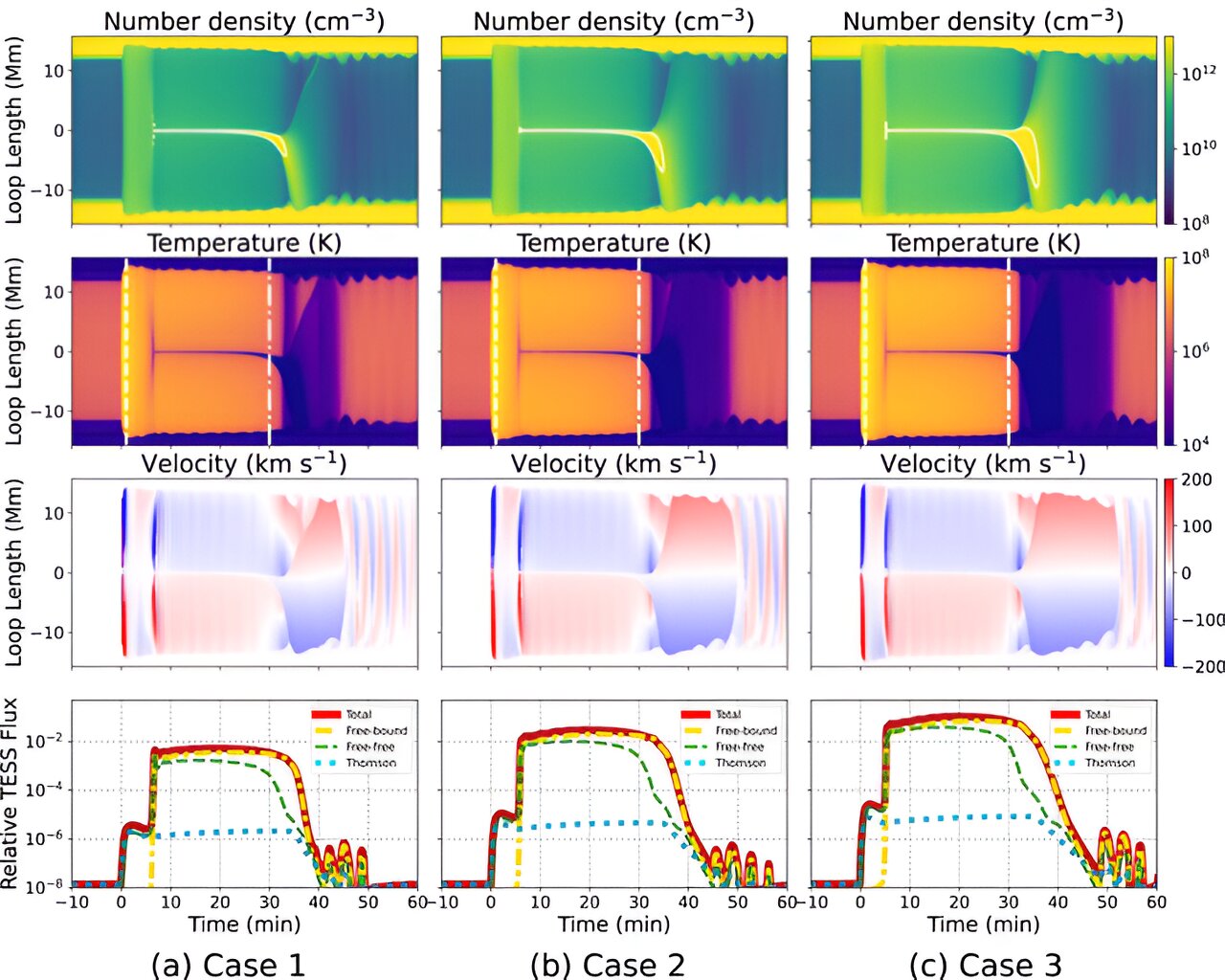

Our sun actively produces solar flares that can impact Earth, with the strongest flares having the capacity to cause blackouts and disrupt communications—potentially on a global scale. While solar flares can be powerful, they are insignificant compared to the thousands of “super flares” observed by NASA’s Kepler and TESS missions. “Super flares” are produced by stars that are 100–10,000 times brighter than those on the sun.
The physics are thought to be the same between solar flares and super flares: a sudden release of magnetic energy. Super-flaring stars have stronger magnetic fields and thus brighter flares but some show an unusual behavior—an initial, short-lived brightness enhancement, followed by a secondary, longer-duration but less intense flare.
A team led by University of Hawaiʻi Institute for Astronomy Postdoctoral Researcher Kai Yang and Associate Professor Xudong Sun developed a model to explain this phenomenon, which was published today in The Astrophysical Journal.
“By applying what we’ve learned about the sun to other, cooler stars, we were able to identify the physics driving these flares, even though we could never see them directly,” said Yang. “The changing brightness of these stars over time actually helped us ‘see’ these flares that are really far too small to observe directly.”
Light curves
The visible light in these flares was thought to come only from the lower layers of a star’s atmosphere. Particles energized by magnetic reconnection, rain down from the hot, tenuous corona (outer layer of a star) and heat these layers.
Recent work has hypothesized that the emission from coronal loops—hot plasma trapped by the sun’s magnetic field—may also be detectable for super-flaring stars, but the density in these loops would need to be extremely high. Unfortunately, astronomers had no way to test this, since there is no way to see these loops on stars besides our own sun.
Other astronomers, using data from Kepler and TESS telescopes, spotted stars with a peculiar light curve—similar to a celestial “peak-bump,” a jump in brightness. It turns out, this light curve bears a resemblance to a solar phenomenon where a second, more gradual peak follows the initial burst.
“These light curves reminded us of a phenomenon we’ve seen on the sun, called solar late-phase flares,” said Sun.
Producing similar late-phase brightness
Researchers asked, “Could the same process—energized, large stellar loops—produce similar late-phase brightness enhancements in visible light?”
Yang tackled this question by adapting fluid simulations that had been frequently used to simulate solar flare loops, and scaling up the loop length and magnetic energy. He found that the large flare energy input pumps significant mass into the loops—resulting in dense, bright, visible-light emission, just as predicted.
These studies revealed that we only see such “bump” flaring light when the super-hot gas cools down at the highest part of the loop. Because of gravity, this glowing material then falls, creating what we call “coronal rain,” which we often see on the sun. This gives the team confidence that the model must be realistic.
More information:
Kai E. 凯 Yang 杨 et al, A Possible Mechanism for the “Late Phase” in Stellar White-light Flares, The Astrophysical Journal (2023). DOI: 10.3847/1538-4357/ad077d
Provided by
University of Hawaii at Manoa
Citation:
Physics behind unusual behavior of stars’ super flares discovered (2023, December 6)
retrieved 6 December 2023
from https://phys.org/news/2023-12-physics-unusual-behavior-stars-super.html
This document is subject to copyright. Apart from any fair dealing for the purpose of private study or research, no
part may be reproduced without the written permission. The content is provided for information purposes only.





